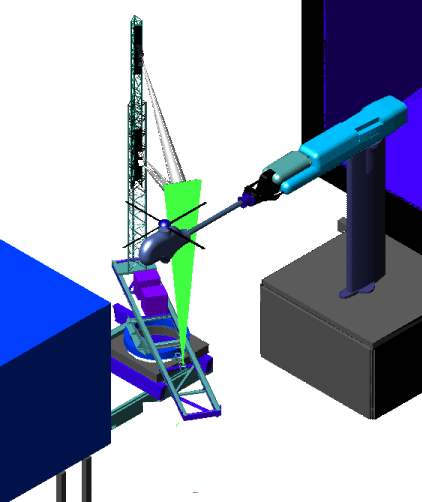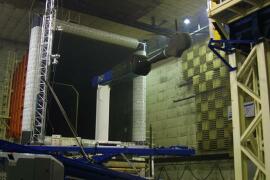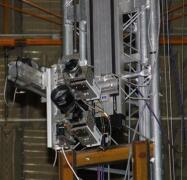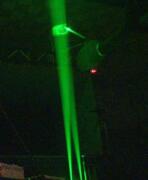HART II - Wake Investigation for Actively Controlled Rotor Systems
PIV Measurements on a Large-Scale Helicopter Rotor Model
A joint project between
to study rotor blade vortex interaction (BVI) and blade wake interaction (BWI) using modern diagnostic tools such as PIV. The ultimate aim of this project was to provide a comprehensive and unique data base for rotor wake modeling and code validation to improve the understanding of rotor acoustics, rotor aerodynamics, blade motion and flow phenomena.
More information about the Hart-II project can be found on the homepage of DLR's Institute of Flight Systems.
Some details of the measurement campaign
| rotor | 40% scale Bo105 rotor, diameter = 4 m running at 1000 rpm, rotor plane 10m above ground |
| flow facility | open test section of DNW-LLF (nozzle cross section 8 x 6 m2) |
| flow conditions | tunnel flow 33 m/s, blade tip speed 220 m/s (advance ratio µ=0.15) |
| seeding | 3 large PIVTEC seeding generators (global & stream-tube seeding) |
| laser | Nd:YAG @ 532nm (green), 2 x 600mJ using three Quantel Brilliant B double pulse lasers |
| imaging configuration |
stereoscopic PIV imaging at two resolutions simultaneously (4 PCO-Sensicam cameras) using PIVTEC Scheimpflug camera mounts obervation distance >6 m per leg, viewing angle ~45° |
| data acquisition | >500GB of PIV images |
| PIV processing | PIVTEC PivView for parameter adjustment PIVTEC 'dpiv' for command-line based batch processing |
| data yield | more than 30,000 instantaneous three-component flow velocity maps |
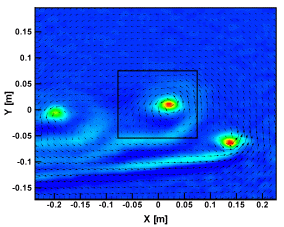 |
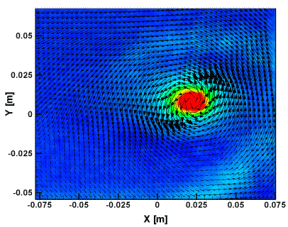 |
| Average flow field as obtained with stereoscopic PIV measurement (100 samples). Only 1/9 of the velocity vectors are shown for clarity. | Detail of flow field on the left |
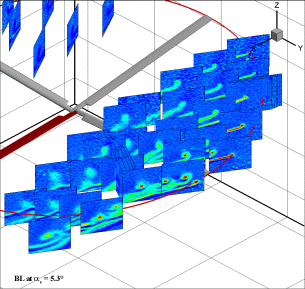 |
|
Representation of stereoscopic data recorded for one flow configuration.
Each plane represents an average of 100 individual PIV recordings. |
Click on images to enlarge
For more information about our products or if you wish to have your PIV application featured here feel free to contact us directly at info@pivtec.com.
Copyright © 2001-2003, PivTec GmbH
Send comments or questions to info@pivtec.com
Last change:
